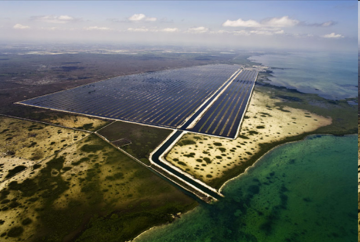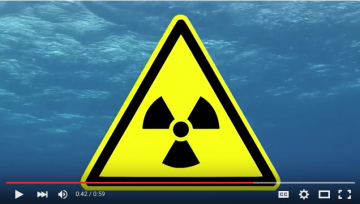News: Expert Report Provides Affordable, Practical Solution to FPL’s Polluting Cooling Canal System at Turkey Point [Blog here]
News: Citizen groups file federal Clean Water Act lawsuit against FPL for ongoing pollution in Biscayne Bay (amended complaint here)
News in review:
SACE, partners intend to file Clean Water Act suit again FPL’s polluting Turkey Point
New analysis confirms FPL’s Turkey Point is polluting Biscayne Aquifer & Biscayne National Park
Southern Alliance for Clean Energy has been concerned about costly Florida utility plans to potentially build more risky, water-guzzling new nuclear reactors, and advocates for safe, clean and affordable energy choices that are available today and can reduce global warming pollution. Florida Power and Light (FPL) is pursuing the possible expansion of its Turkey Point site near Miami. The two proposed nuclear reactors have an estimated price tag of well over $20 billion. Learn more here.

SACE is also extremely concerned about FPL’s existing Turkey Point site, which already has two operating reactors (Units 3 &4) that use a vast amount of water through its antiquated cooling canal system (CCS), essentially an open industrial sewer that is polluting the Everglades and Biscayne National Parks along with the Biscayne Aquifer. Recent regulatory decisions are only making matters worse.
In fact, Water Science Associates concluded in its August 12, 2016 report that the Florida Department of Environmental Protection’s June 2016 consent decree with FPL fails to adequately address the problems at Turkey Point. An excerpt here:
“One of the objectives for the model development was to ‘ameliorate the westward movement of the saltwater and hypersaline water interface in the Biscayne aquifer.’ Proposed extraction wells in the scenarios reviewed indicated removal of salt from the aquifer and some mitigation of the westward extent of the hypersaline plume. However, none of the analyses indicated if these proposed remediation systems would sufficiently prevent the further westward migration of the saltwater interface west of the hypersaline water plume.”
What’s Happening?
- Turkey Point is already one of Florida’s biggest water users and is discharging daily at least 600,000 pounds of salt and up to 3 million pounds along with other contaminants such as ammonia, heavy metals and tritium (a radioactive form of hydrogen) directly into the Biscayne Aquifer.
- This contamination is further exacerbating salt water intrusion putting South Florida’s drinking water supply at risk, upon which 3 million people rely.
- Using vast amount of fresh water to generate energy conflicts with the important goals of Everglades restoration.
- Following an extensive review of the growing body of evidence documenting leaks of radioactive

Watch this minute-long video on the existing pollution at Turkey Point. elements and other pollutants into Florida surface and ground water, SACE and the Tropical Audubon Society (TAS) in mid-March issued a 60-day notice of intent to file a citizen lawsuit against Florida Power & Light (FPL) under the Clean Water Act (CWA). The suit was announced in mid-July and SACE and TAS were joined by Friends of the Everglades. The amended complaint, which includes additional information, was filed in October 2016.
- SACE also released an expert report in July 2016 about an affordable, practical solution to address the pollution from the cooling canal system — build mechanical draft cooling towers. Read more here and in our blog post.
- Click the image on the right to watch the video about what’s threatening Biscayne Bay and click on the image of the cooling canals above for a video by the K=1 Project documenting experts from South Florida discussiong the Turkey Point’s polluting history.
Future Threats
- The anticipated impacts of global climate change including sea level rise, warmer temperatures and increased flooding will worsen this already unacceptable situation.
- Despite all the problems already occurring, FPL is considering building two more nuclear reactors, which will likely only worsen the environmental mess at Turkey Point.
- Not only that, but FPL customers are already unfairly paying in advance for costs associated with these proposed reactors, due to the anti-consumer early nuclear cost recovery law that the state legislature passed. Since 2008, customers have been charged $282 million. Thankfully FPL’s 2016 request for $22 million more from customers for the even further delayed nuclear reactors has been deferred to 2017.
How Can You Take Action?
- Sign the petition requiring FPL to clean up Turkey Point and for regulators to take action to protect our National Parks and South Florida’s drinking water.
- Learn more: read our amended CWA complaint; access a fact sheet on Turkey Point; read our blogs; watch the short video and the K=1 Project’s video; watch local news coverage here and here.
- Tell the Public Service Commission to stop approving FPL’s spending on unnecessary, expensive new reactors at Turkey Point and instead advance less-water intensive, affordable clean energy choices. Use the contact form or call 1-800-342-3553.
- Submit a letter to the editor of your local paper.
- Sign the petition (en Espanol) opposing FPL’s nuclear expansion at Turkey Point.
- Join SACE!